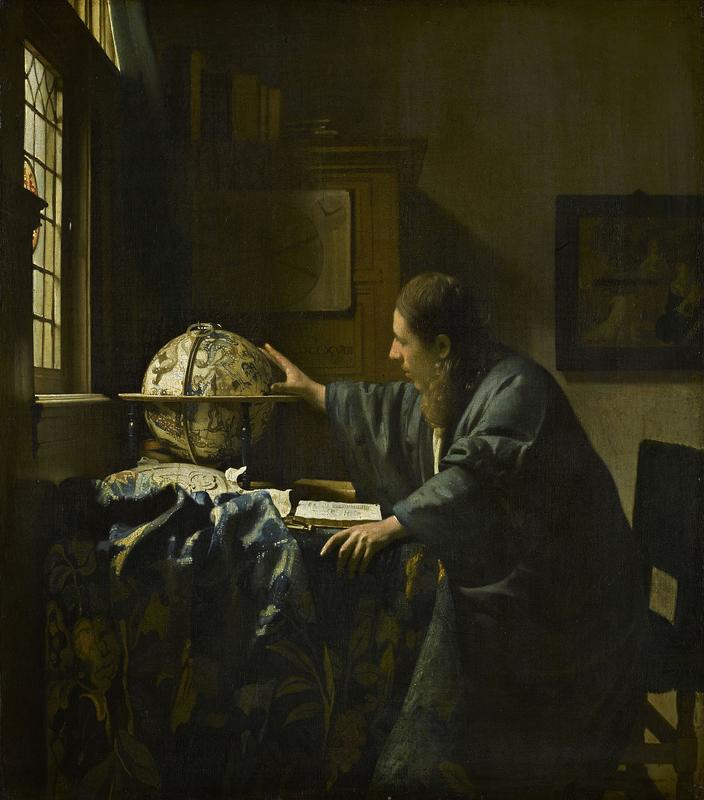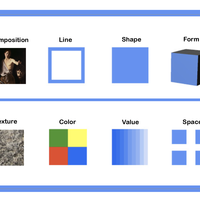More about The Astronomer
- All
- Info
- Shop

Sr. Contributor
One of only two Vermeer paintings in the Louvre, and the only one stored in a salt mine.
Possibly, the subject was Vermeer's good friend Anton van Leeuwenhoek, discoverer of protozoa, among other things, and inventor of the first modern microscope. Thanks nerd! The subject's pose and dress could have been lifted from Rembrandt's etching of Faustus. But that can't be proven either way, so go easy with the accusations.
The painting on The Astronomer's wall depicts Moses found amongst the Nile's reeds. The Moses painting is a 17th century Easter Egg, as the same work is also found in other Vermeer paintings. One interpretation for the Easter Egg could focus on the belief that astrology was a science originating in Egypt. The painting-within-a-painting could also be an allegory for astronomy's potential to expand our knowledge of the universe. Moses was figured as an allegory for guides. So, too, could astronomers become society's guides to an unknown, greater reality. Although, we'd Yelp the sh*t out of our guide if they lost us in the desert for 40 years, not immortalize them as an archetype and prophet.
The Rothschild family owned The Astronomer before it was stolen by one of Hitler's art confiscation units (there were multiple units competing to be the worst around). Stealing this painting was basically their first task after invading France. The Astronomer was to be a focal point in Hitler's planned super-museum. But Goering wanted the painting, which was really irritating to Hitler who worked so hard for his army to steal it. Whose Third Reich was it anyway, Goering? Hitler had the last say by storing The Astronomer in the Steinberg salt mine at Altaussee, along with 9000 other works of art. The Monuments Men recovered it in the wake of Hitler's defeat. If this paragraph would be more interesting as acted out by George Clooney and Matt Damon, you could always watch the end of "The Monuments Men", which features the squarest jawed, big-armed silver foxes a moviegoer could hope for.
Featured Content
Here is what Wikipedia says about The Astronomer (Vermeer)
The Astronomer (Dutch: De astronoom) is a painting finished in about 1668 by the Dutch Golden Age painter Johannes Vermeer. It is in oil on canvas with dimensions 51 cm × 45 cm (20 in × 18 in).

Check out the full Wikipedia article about The Astronomer (Vermeer)



















